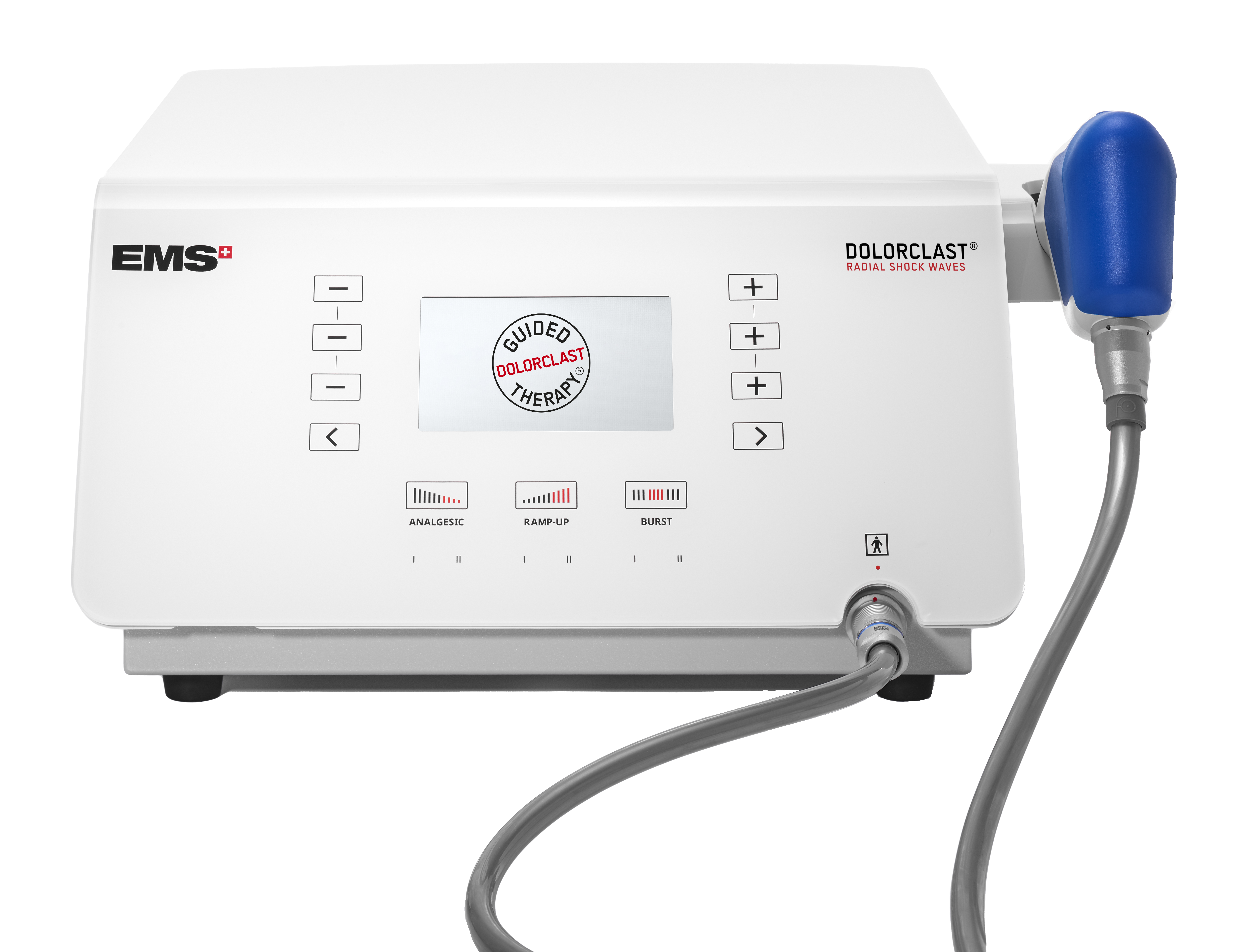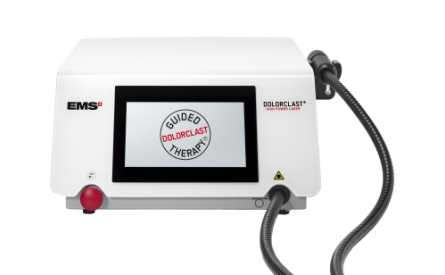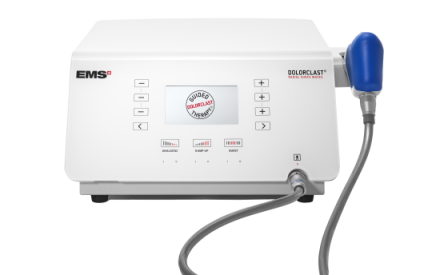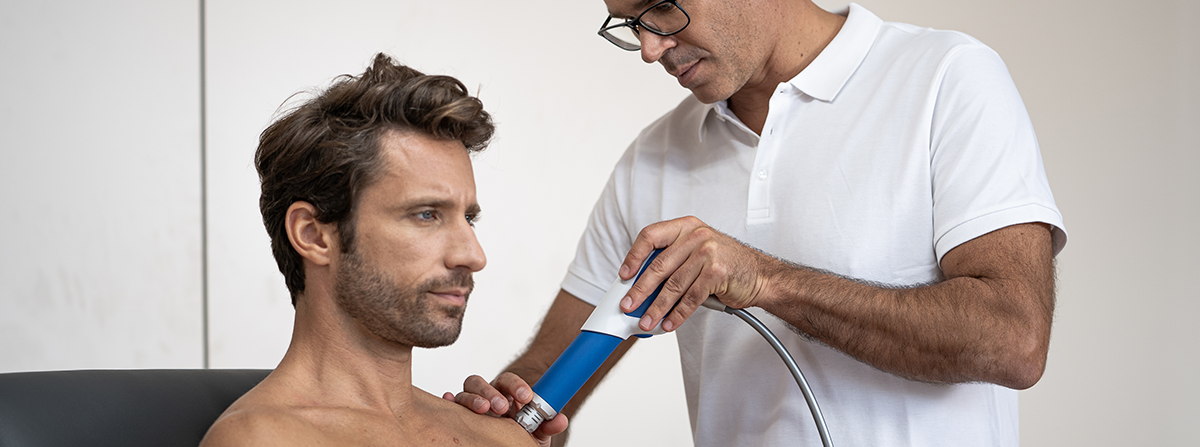
DolorClast® Radial Shock Waves
Interested in learning more about radial shock wave therapy?
Click to access EMS' recently published e-book:
What are the benefits of shock wave therapy?
Extracorporeal Shock Wave Therapy (ESWT) is the application of Shock Waves in medicine.
It is clinically proven that pressure waves, when applied to injured tissues, stimulate metabolic reactions:
- Reduction of pain felt by nerve fibers
- Increase of blood circulation in surrounding soft tissues
- Beginning of healing process triggered by stem cells activation
The sound of healing with radial shock waves

How can shock wave therapy help in physical therapy?
- Compressed air accelerates a projectile which strikes a fixed applicator.
- The kinetic energy is converted into a shock wave delivered to the target tissue through the skin.
- These shock waves are conveyed radially for broad treatment areas.
-
A shock wave begins by a compression phase. The peak pressure creates shear stress in the tissues.
-
A tensile phase follows and generates cavitation bubbles. A high cavitation level is a result of a high amount of energy density delivered by the shock wave device.
-
This energy stimulates metabolic reactions to the applied tissues
How to be effective with shock wave therapy?
It`s easy: the more energy delivered into the tissue, the better the therapeutic outcome. For this, we know the following:
“A significant tissue effect is cavitation consequent to the negative phase of the wave propagation ” (Ogden et al., 2001)
“Both parameters (Compression phase and Cavitation) may have important consequences for therapeutic bioeffect” (Perez et al., 2014)
“The contribution of cavitation to the therapeutic effect of radial shock waves was recently shown in an advanced animal model ” (Angstman et al., 2015)
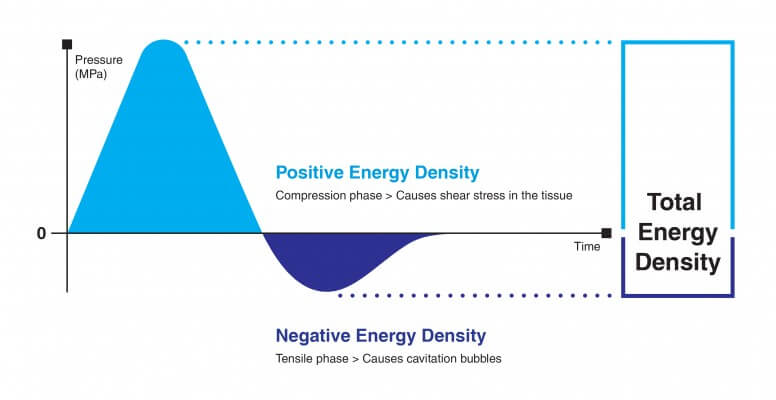
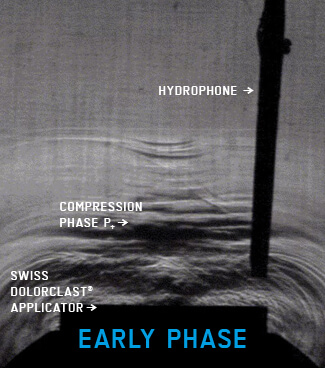
Radial shock waves visualization
The compression phase (P+) penetrates the skin
and weakens the tissue.
A tensile phase (P-) follows generating
cavitation bubbles.
These bubbles collapse causing secondary shock waves.

How do radial shock waves work?

Red chili peppers contain capsaicin. At first this substance overwhelms the so-called C nerve fibers responsible for transmitting pain but then disables them for an extended period of time.
Everybody knows the feeling – first, the mouth is on fire, then it feels completely numb. Research has indicated that shock wave therapy works the same way1.
1 Maier et al., Clin Orthop Relat Res 2003; (406):237–245.
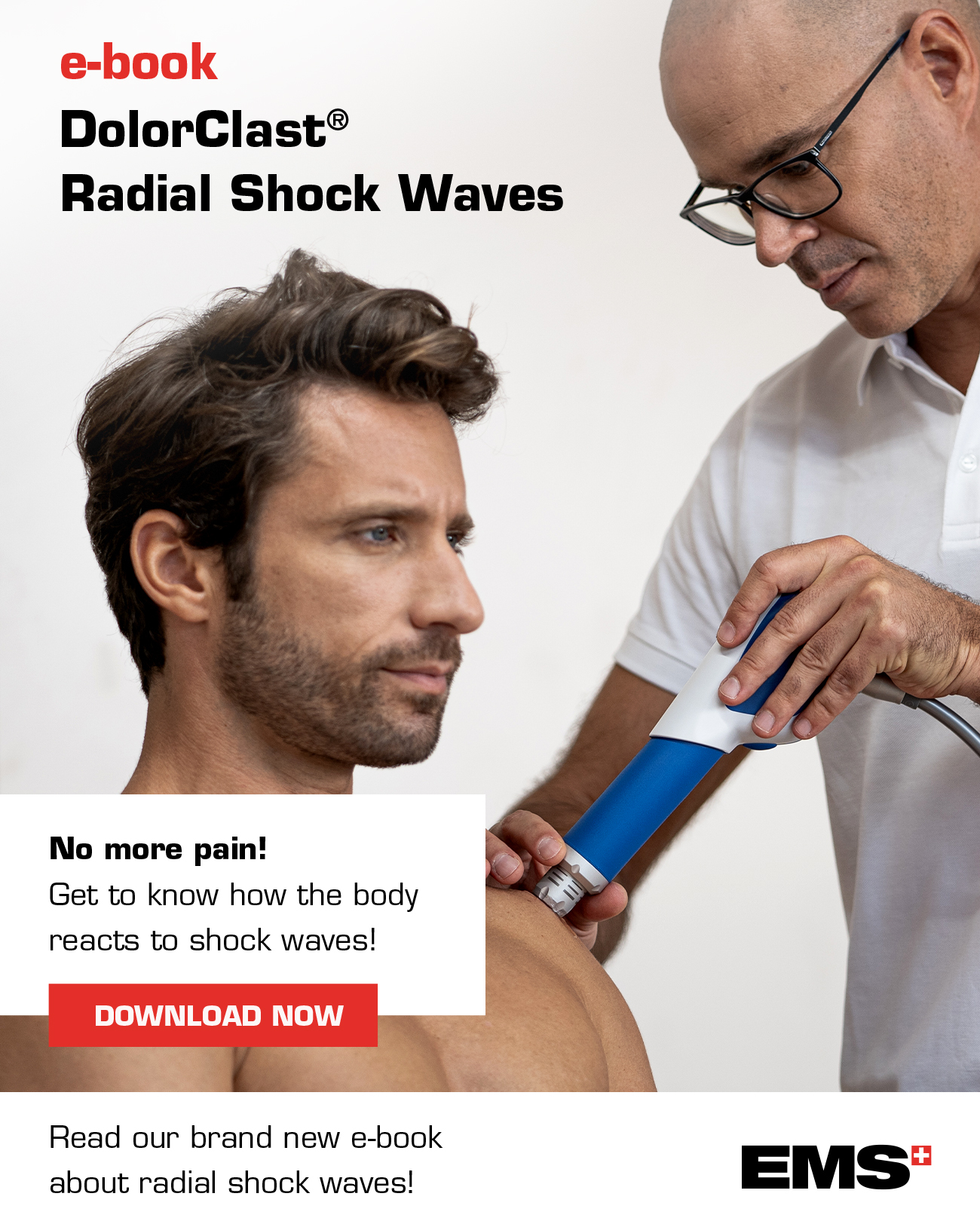
Download our new e-book on the DolorClast® Radial Shock Waves
- What is radial shock wave therapy?
- How can it be used to treat musculo-skeletal disorders?
- How do they work on the body?
- What are the indications and contrindications?
Everything you've ever wanted to know about radial shock wave therapy and more in our new e-book!
Introducing: DolorClast® Radial Shock Waves
In 1997, EMS patented the first radial shock wave device, the Swiss DolorClast®, based on the ballistic principle.
Compressed air sent to the handpiece accelerates a projectile, which strikes a fixed applicator at high speed (up to 90 km/h). The kinetic energy resulting from this movement is converted into a shock wave transmitted in a radial manner to the targeted tissues.
Shock waves delivery is short in time, usually lasting just a few minutes, thus enabling to be coupled with other therapies within the same session as recommended by the GDT. DolorClast® Shock wave protocol usually includes a total of three to five sessions, planned at a rate of one to two sessions per week with an interval of minimum 72h between them.
Given that DolorClast® Radial Shock Waves delivers the highest energy density, no wonder that it generates the highest amount of cavitation in the treated tissues.
Which shock wave devices gives the most cavitation?
The pictures below represent the maximum level of cavitation (black dots) generated with different radial shock waves handpieces at maximum pressure settings at 15Hz.1

1 NikolausB. M. Császár et al., “Radial Shock Wave Devices Generate Cavitation”, 2015.
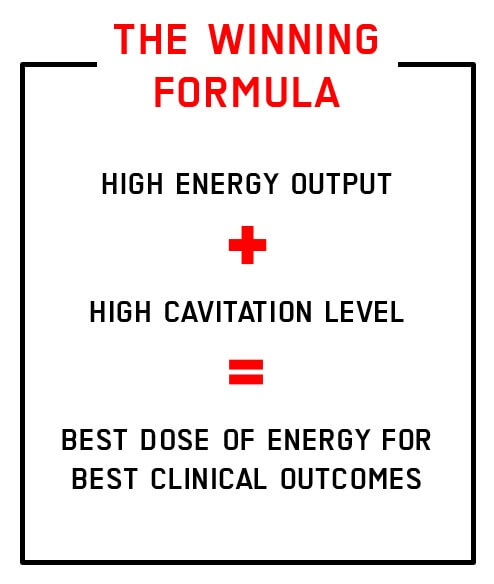
Clinical researches1 show that therapeutic effects of RSWT® are linked to the level of cavitation produced in the treated tissues.
And, a high cavitation level is a result of a high amount of energy density delivered by the devices’ handpieces.
The higher the total of the energy density is, the better the treatment outcomes will be.
1 Perez et al., 2014 / Angstman et al., 2015 / Ogden et al., 2001 / Maier et al., 2003 / Hausdorf et al., 2008.

DolorClast® Radial Shock Waves – The Swiss original in worldwide pain treatment
- 34 / 62 randomized controlled trials: used in more studies listed in the PEDro database than any other ESWT device
- Over 13'000 units in use worldwide
- More than 100 Million patients treated worldwide
Guided DolorClast Therapy suggests a combination therapy approach:
Apply DolorClast® Radial Shock Waves:
- 5 minutes after the end of DolorClast® High Power Laser treatment for excellent combined clinical outcomes, or
- 1 hour after the end of DolorClast® High Power Laser treatment for excellent optimal clinical outcomes
Backed up by science
A recent study by Prof. Dr. med. Christoph Schmitz from LMU, University of Münich, Germany, showed that thanks to this combination, it is possible to deliver up to 50% more energy just 5 minutes after the laser pre-treatment and up to 100% when waiting one hour in between!

